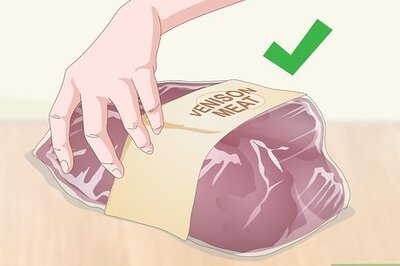
views
“I was just blown away by the spaces in Aspinwall and Pepper Houses,” says Sunitha Kumar Emmart, who owns Gallery SKE (her initials) in Bangalore. “I recently returned from the ‘Documenta’ art exhibition, which is held every five years in Kassel. Germany. The venues in Fort Kochi are comparable to anything you see internationally.”
There is an amazing character to all the places. “Apart from that, there is the history,” says Sunitha. “In terms of landscape, the Biennale locations are wonderful, set in the little roads of Fort Kochi, a small town with a great personality. There are temples, churches and mosques and this multiculturalism is exciting.”
She remembers standing in one of the studios at Pepper House. “There is this idyllic scene of the water at one side, when suddenly a cruise boat goes past, blaring Hindi music,” she says. “On the other side is the Customs House. It is a mix of the old and the new, the touristy and the historical.”
Sunitha is confident the Biennale is going to be a grand success. “It will bring the Indian artistic community together,” she says. “Hopefully, ordinary people will get engaged in art.”
Sunitha, of course, is fully engaged in art. She started Gallery SKE in Bangalore in 2003. And it displays a wide range: sound, photography, painting, installation, video and sculpture.
And Sunitha has different aims from other owners. “Some galleries are non-profit, while others are gung-ho commercial places,” she says. “A few, like mine, are in-between. In fact, I am not somebody who listens to the market. My skills as a business person are not that great.”
Sunitha’s skill lies in spotting new talent, and working with them from the beginning, till they flower as artists. “I look for drive and ambition, and an inner connection,” she says. “If everything clicks, I reach out my hand in friendship. In fact, I believe in a long-term relationship. When gallery owners do a show with an unknown, and if it is successful, only then will they call him back. If not, they will ignore them. But I believe that not every show can be a great one and young artists should be given more chances.”
Some of the artists Sunitha has discovered have gone on to become commercial successes. They include Sudarshan Shetty, Sakshi Gupta, Sheela Gowda and Bharti Kher.
What is unusual about Sunitha, as a gallery owner, is that she has avoided going to the established artists. “The role of the gallery is to create patronage and exposure,” she says. “There is a lack of a challenge to work with a known artiste.”
Asked to analyse the personalities of artists, she says, “Most of the good ones have a certain madness in them, but in a good way. However, some are dull, while others try hard to be sensational but they usually have a low quality of content. Nevertheless, the world will be a dull place without these lovable people.”
But life is not easy for the artists, as the art scene is not well developed in India. “We just don’t have enough of museums, private foundations, and not too many great private collections like the way it has been established for hundreds of years in the West. A lot of us are trying to do something about it,” says Sunitha.
















Comments
0 comment